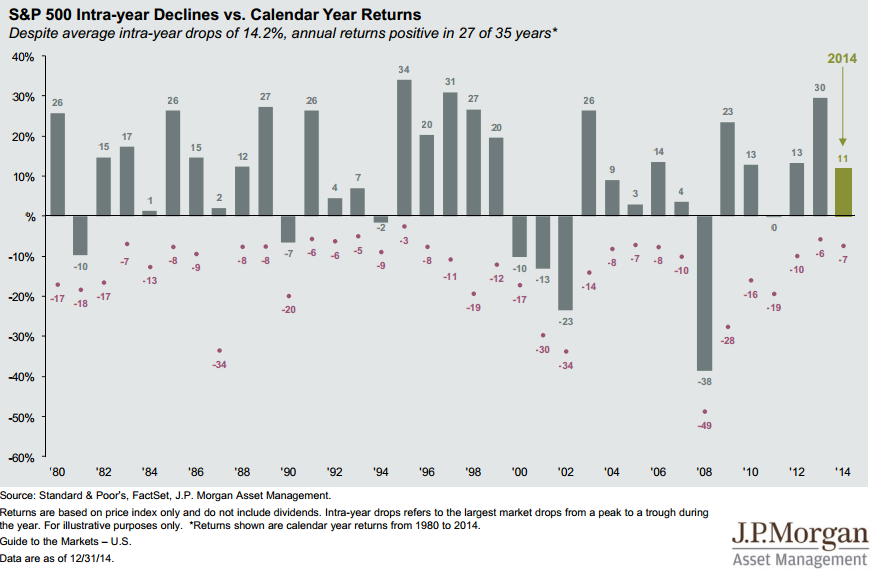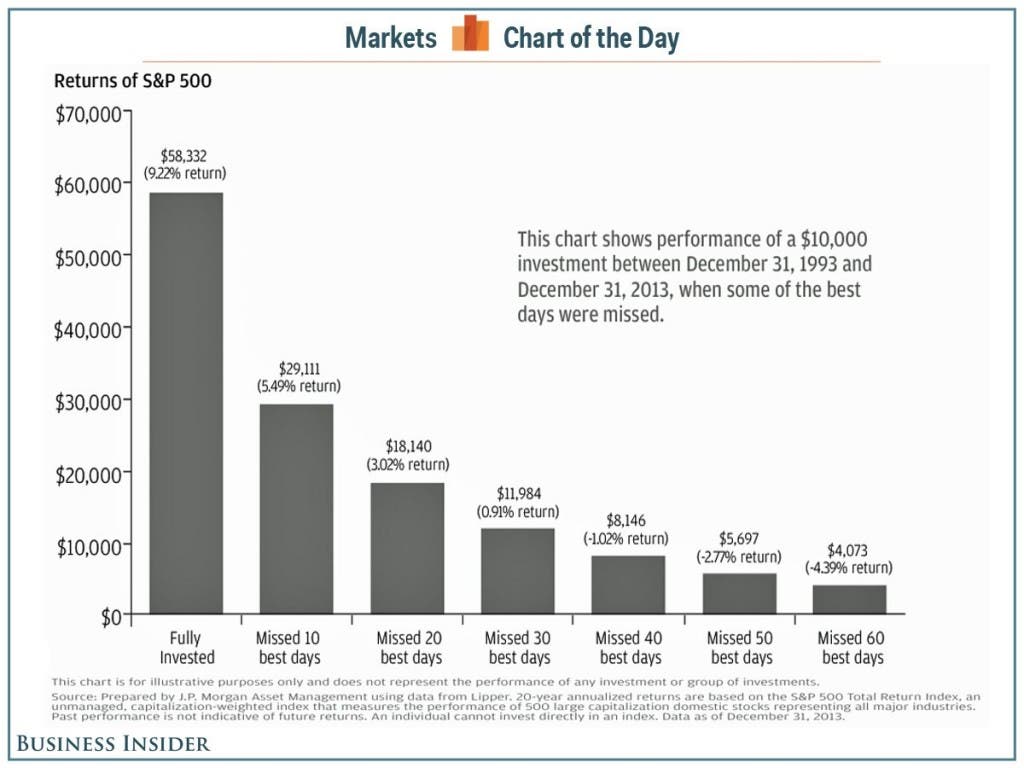As discussed last week, we believe greater uncertainty about interest rates will cause market volatility to increase. While greater market fluctuation can be unsettling at times, it is important to remember that sell-offs do happen. Sometimes they can be quite large. They are also normal and should not cause investors to panic.
Big sell-offs can even occur during years that the market moves higher. For example, the Black Monday crash of 1987 was part of a bull market. Work by JP Morgan Funds’ David Kelly shows that “despite average intra-year drops of 14.2%, annual returns [have been] positive in 27 of 35 years.”
If we stick to the traditional definition, which defines a market correction to be a decline of 10% or more, it has been nearly 1,200 days since the S&P 500 last corrected in October 2011. When the market starts to fall, our brains often cause us to worry about the possibility that a downturn will turn into a correction, or even worse, an outright crash. This can lead investors to sell stocks and sit on the sidelines in order to “wait out the volatility.”
However, history shows this is the most classic mistake investors can make. When the markets move against us, it is important to take a deep breath and realize that when it comes to building wealth, it is “time in the market” rather than “timing the market” that matters.
JP Morgan demonstrated how much an investor’s returns suffer if they miss a few of the market’s best days. Their analysis indicated that if an investor stayed fully invested in the S&P 500 from 1993 to 2013 she would have realized a 9.2% annualized return.
On the other hand, if trading activity caused her to miss just the 10 best days during that same period, then those annualized returns would collapse to 5.5%. The missing days are particularly damaging because the lost gains cannot be compounded during the rest of the investment holding period.
In short, markets are too complex and dynamic for anyone to predict with reliable consistency. As a result, the best plan is to stay invested. It is extremely difficult to time the market with any level of consistency. Market lows can often lead to overly emotional decision making. Taking a long-term investment approach while managing volatility, can result in a better outcome.
We certainly do not pretend that we can accurately predict the market’s near-term direction. Nor do we know for sure when the current bull market will correct or even enter bear market territory. However, over the long term, we believe the market will maintain its upward bias. Against this backdrop, we will continue to seek opportunities to add shares of well-managed, high-quality companies that are attractively valued. We think taking a long-term approach also increases the chances of success.




